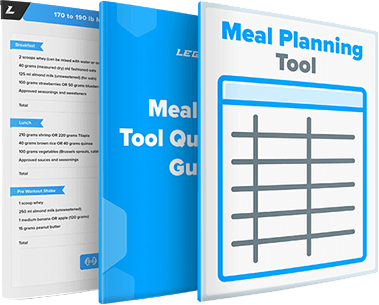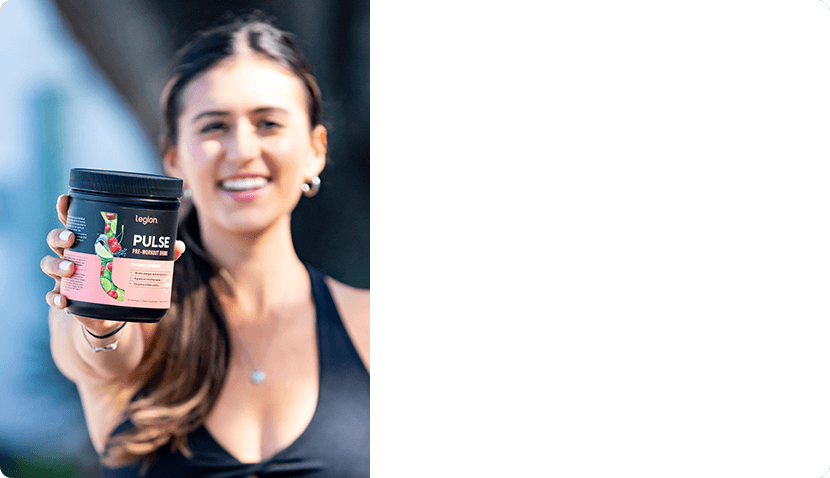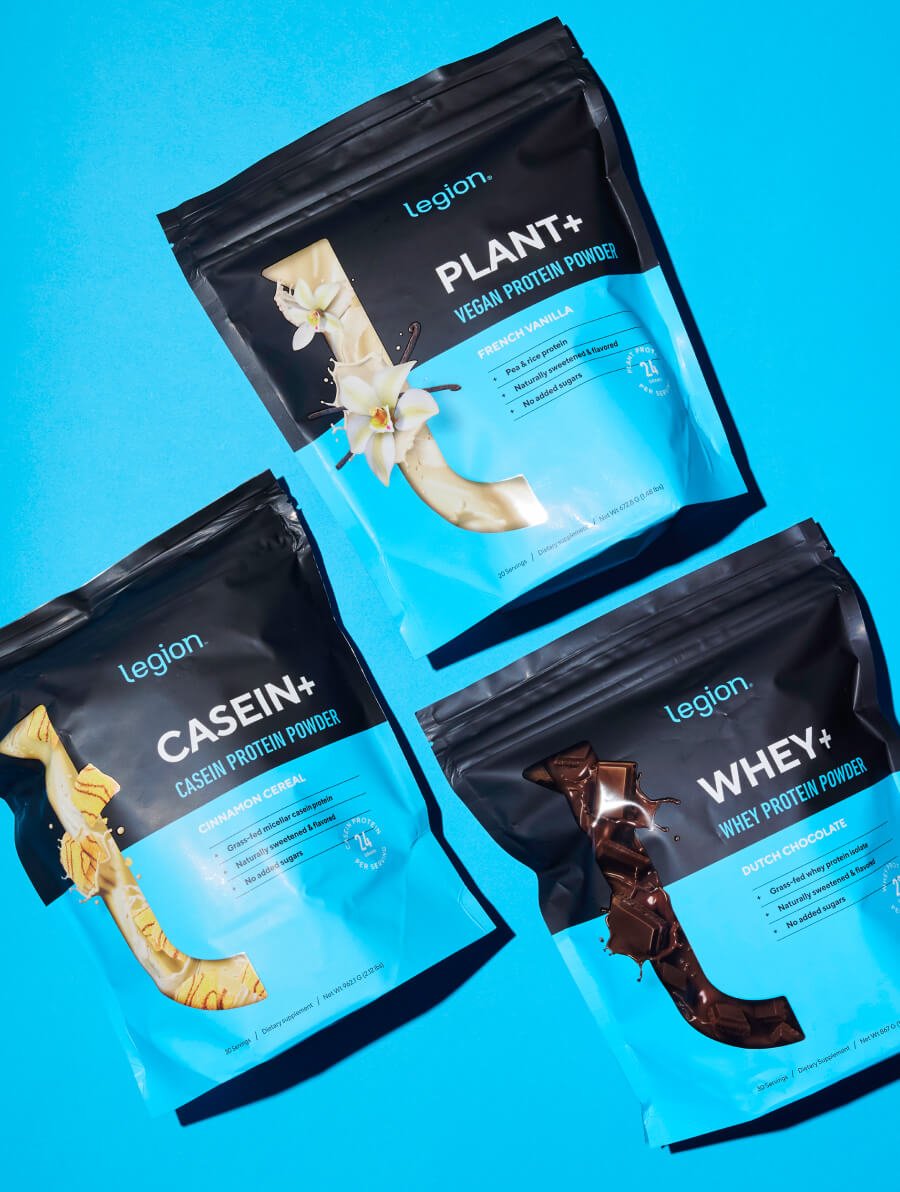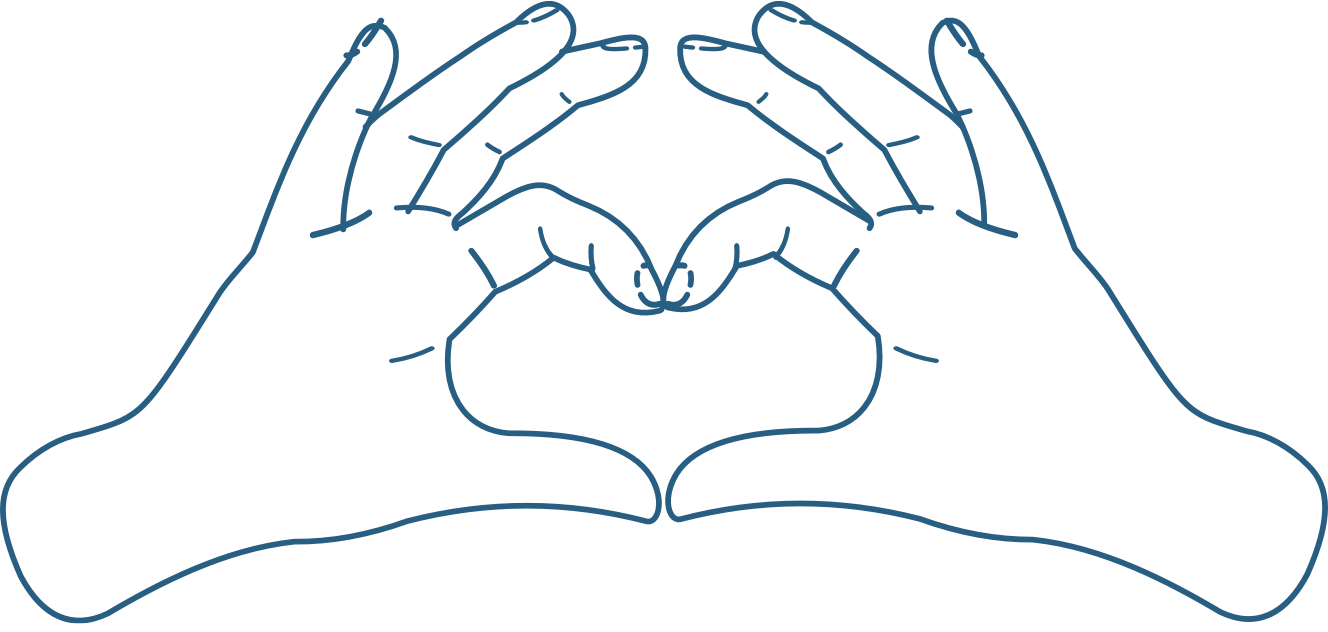Listen on Apple Podcasts | Listen on Spotify | Listen on YouTube
Every time I go to the gym, I see the same crowd of overweight people grinding away in their spin classes and treadmill, StairMaster, and elliptical sessions.
Every day they’re there, sweating on the same machines–probably reserved and named by now–and they’re just as fat as they ever were. Some are even fatter than when they started.
After all this time do they really think anything is going to change or am I witnessing some twisted kind of Stockholm Syndrome between fleshy slaves and mechanical lords?
Jokes aside, the truth is these people are just following decades of bad exercise advice centered around long hours of cardio, which has produced millions of overtrained, overweight, underfit people addicted to burning calories instead of getting fit.
Now, you might be thinking I’m staunchly anti-cardio. I’m not. I do cardio regularly and as you’ll see, it has its benefits and uses.
When done properly, cardio can improve your health, help you lose fat faster, and even help you build muscle. But when done improperly, it can do the opposite: impair health, fail to help you lose weight, and negatively impact body composition.
So, in this podcast we’re going to break down how much cardio you should do, how to get the most bang for your (sweaty) buck, and how much cardio is too much and why.
Let’s start with how to determine if you should be doing cardio at all and if so, how much you should be doing.
Time Stamps
4:55 – How much cardio should you do?
7:21 – Does cardio help you lose weight?
14:06 – How can you lose weight with cardio?
21:03 – How does cardio affect muscle building?
24:15 – Should you do cardio or weights first?
Mentioned on the Show:
The Easiest Cardio Workout You Can Do (That Actually Works)
Should You Do Cardio or Weightlifting First? What 20 Studies Say
What did you think of this episode? Have anything else to share? Let me know in the comments below!
Transcript:
You should do as much cardio as it takes to achieve your health and fitness goals and no more. And it shouldn’t be so much that it significantly impairs your physical performance, your recovery, or your health.
Hey, Mike here and welcome to another episode of the Muscle for Life podcast. This time we’re going to talk cardio. How much cardio does it take to get into great shape? And when does it start causing problems? Those are going to be the questions we’re going to answer, plus a few others. And this is something that I’ve written about and probably touched on here and there, but I figured a deep dive episode was in order because although the mainstream fitness advice industry is moving more and more toward resistance training and weightlifting in particular, there is still a lot of bad advice out there that really centers around many hours of cardio and very little resistance training, if any at all, and over the last several decades that advice has produced many millions of over trained, overweight, under fit people who are addicted to, or were addicted to before they gave up.
Simply burning calories instead of actually getting fit. Now, if you are familiar with me and my work, you know that I’m not staunchly anti cardio. I myself do cardio regularly. I do about an hour per week right now, and I am doing a bit of a lean bulk phase. I am Cycling my calories, which I wrote an article on recently, over at Muscle for Life.
You can find it over there. I’m probably going to turn it into a podcast, I’m going to make it a shorter one though, because the article was very long and I touch on many things, and I don’t think all of that information is necessary in the podcast. I’ll probably just trim it down and do it. 10 minute talk or something, but the point is I’m in a, I’m in a gaining phase.
I guess you could say I’m still doing an hour or so of cardio per week because it has health benefits. It has cardiovascular benefits. It has metabolic benefits, and it actually may be able to help you build muscle faster as well. But when you do it improperly, which is. when you follow most of the cardio advice out there.
It can do the opposite. It can impair your health. It can fail to help you lose weight faster, even though that’s why most people are doing cardio to try to lose weight. And it can also negatively impact your body composition. So in this podcast, we’re going to break down how much cardio you should do, how to get the most bang for your sweaty cardio buck, and how much cardio is too much and why.
This is where I would normally plug a sponsor to pay the bills, but I’m not big on promoting stuff that I don’t personally use and believe in, so instead I’m just going to quickly tell you about something of mine. Specifically, my high quality sports multivitamin, Triumph. Now, Triumph was designed for athletes and physically active people who want to optimize their health and fight off stress, fatigue, and overtraining.
www. ottobock. com It contains 21 vitamins and minerals as well as 14 additional ingredients that improve overall health and being, enhance physical and mental performance, and help protect against disease. All that is why Triumph has over 500 reviews on Amazon with a Four and a half star average and another 180 plus on my website with a five star average.
So if you want to plug any nutritional holes in your diet, improve your mood and mental and physical performance, and boost your resistance to stress. Sickness and disease, then you want to head over to www. legionathletics. com and pick up a bottle of triumph today. And just to show how much I appreciate my podcast peeps, use the coupon code podcast to check out and you will save 10 percent on your entire order.
And lastly, you should also know that I have a very simple 100 percent money back guarantee that works like this. You either love my stuff or you get your money back, period. You don’t have to return the products, you don’t have to fill out forms, you don’t have to jump through any other hoops or go through any other shenanigans.
So you really can’t lose here. Head over to www. legionathletics. com now, place your order and see for yourself why my supplements have thousands of rave reviews all over the internet. And if for whatever reason they’re just not for you, Contact us and we will give you a full refund on the spot. All righty.
That is enough shameless plugging for now. At least let’s get to the show. All right. So let’s start with the question that is probably on your mind. If you are listening to this podcast, how much cardio should you do? And my answer is pretty simple. You should do as much cardio as it takes to achieve your Health and fitness goals and no more.
And it shouldn’t be so much that it significantly impairs your physical performance, your recovery, or your health. And if that sounds overly cautious to you, I understand. I’m making cardio sound like a medicine that you have to carefully dose to beat the disease without wrecking your body in the process.
And And that metaphor is a bit extreme, but there is something to be said for it. For example, research shows that endurance athletes are generally at a higher risk of heart dysfunction than the regular non running public. And the older these athletes get and the more miles they log, the worse the problem gets.
Studies have also shown that marathon runners can develop more heart disease. arterial plaque than sedentary non runners, which of course increases the risk of stroke and dementia. There’s also the not so fun fact that the more cardio you do, the more stress you place on your body. And if you take that too far, you can wind up in a state of chronic pain.
overtraining, you could say chronic stress where your body simply can’t adequately recover from your workouts. And finally, if you hang out around dyed in the wool endurance athletes for a little bit, not even that long, you will quickly notice how many of them have trouble with their knees, their backs, their hips, their tendons, their bones.
And I understand that the research that I’m talking about is epidemiological and cannot establish causation, but simply indicate correlation. And I’m also referring to some anecdotal evidence as well. I understand that. And so of course, my point isn’t that doing too much cardio can kill you. But the reality is, if your goal is simply to look good, to feel good, to be healthy and vital and so forth, doing more cardio and more exercise in general for that matter is not always better.
Yes, moderate amounts of exercise and moderate amounts of cardio can definitely improve your health and being, but too much impairs it. That’s the overture. Let’s drill down into some details here. Let’s talk about cardio and losing weight. The majority of people out there doing cardio right now are trying to lose weight, of course.
And many people actually think that you cannot lose weight without sacrificing a bunch of your sweat to the hamster wheels. And while cardio does burn energy, of course, and can support weight loss, unfortunately, research shows that doing Regular cardio by itself guarantees very little in the way of fat loss.
And in fact, many people, studies have shown wind up even fatter after their exercise routines than when they began them. And this is with cardio only routines in particular. I have some good news, you can get and stay as lean as you want without ever doing more than maybe an hour or two of cardio per week.
And in fact, if you want to achieve and maintain a low level of body fat while also preserving your muscle and strength and sanity, you simply cannot. Subject yourself to a torturous cardio routine. You must do less cardio than you probably think is necessary. And I can speak from experience here for the last four to five years.
I was actually surprised when I checked my Instagram. I have maintained a pretty low body fat percentage. I would say somewhere around eight or nine percent. And then sometimes I would cut down, I would go into a deficit for four or five weeks and probably get down closer to 7%. And sometimes I would let myself go and get closer to nine to 10%.
And even now, as I’m going through my lean bulk, because I’m cycling my calories I’m not gaining any body fat yet, at least that I can see in the mirror. And that’s the goal. I’m not going to be able to gain no body fat over the next six months or so, which is probably how long I’ll do it, but I’m going to gain very minimal body fat and maybe around 10 percent now.
So I have maintained this low level of body fat for quite some time and I’ve never done more than maybe an hour and a half to two hours of cardio per week, whether I was cutting or maintaining, and I. Don’t necessarily, or haven’t necessarily needed to do cardio while maintaining. It does help because it allows you to eat a bit more food, which just makes you feel better in general.
But I just enjoy it. I enjoy doing a bit of cardio. It’s a change of pace, I don’t really watch TV. So that’s when I’ll watch a TV show or sometimes I’ll just listen to music or read or something. Anyway my point is you do not have to do a lot of cardio to get and stay lean. And in fact the normal strategy of just doing a bunch of cardio to try to lose weight doesn’t work that well for several reasons.
The first is it is way too easy to eat the calories that you burn because you have to work hard to burn just a few hundred calories if you’re doing cardio and then you can eat all of those back and more without even realizing it. a couple handfuls of nuts and a piece of fruit is all it takes. And so the point here isn’t that the energy that you burn during cardio doesn’t help you lose weight.
Yes, it does support your weight loss efforts, but if you are not also correctly regulating your food intake, you are probably not going to reach your weight loss goals. You are probably going to overeat. too often because for many people, cardio stimulates their appetite, at least low intensity cardio does.
Another issue with a cardio only routine is that your body adapts to the exercise to reduce calorie expenditure. And this is particularly true. Sneaky and troublesome because while many people who are failing to lose weight can deduce or at least suspect that they are overeating, if they have at least a basic understanding of energy balance, they are completely unaware of this adaptive element of exercise.
The problem here is simple. The more you do a certain type of activity, the more your body adapts to increase efficiency. And the more this occurs, the less energy is needed to continue doing that activity. And the net effect is that people often think they’re burning more calories doing cardio than they actually are.
And this is especially aggravated by fitness devices, which already tend to overestimate calorie expenditure. Anyway, and so these people then eat more than they should to maintain an adequate calorie deficit to continue losing weight at a decent clip. And then they wonder after some time has gone by and not much is changing on the scale or in the mirror, if their metabolisms are just shot or if calorie counting and energy balance quote unquote don’t work or if they have hormonal imbalances or whatever.
And many of these people I know because I hear from them regularly. Do not want to give up and instead they just try to fight fire with fire by doing even more cardio, which does increase their calorie expenditure, of course, and can move the needle a bit, but also brings some of the various symptoms related to overtraining that I was mentioning earlier into play and just make the overall experience more and more miserable.
Another problem with doing a bunch of cardio is it does not preserve muscle, which is just as important as losing fat. Because while we say, Oh, I want to lose some weight. What we really mean is I want to lose fat and not muscle. I want to improve my body composition. And this distinction is very important because you can lose plenty of weight and have plenty of it be muscle.
And Then you can look in the mirror and wonder why you look so skinny fat despite hitting your weight goal or weight loss goal. And the key strategy to include in your weight loss regimen to prevent this is some sort of resistance training. Of course, I’m partial to weightlifting, but it does not have to be weightlifting.
And studies show a number of studies show that if you include resistance training in your regimen, you will lose maximal. amounts of fat in minimal amounts of muscle. And depending on what you’re doing, you may actually gain some muscle while losing fat, otherwise known as body recomposition. And that’s extra fun because then your body looks extra better as things go on.
Hey, before we continue, if you like what I’m doing here on the podcast and elsewhere, and if you want to help me help more people get into the best shape of their lives. Please consider checking out my VIP one on one coaching service. Now, my team and I have helped thousands of people of all ages, circumstances, and needs.
So no matter how complicated or maybe even hopeless you might think your situation is, we’re We will figure out how to get you the results you want. Every diet and training program we create is 100 percent custom. We provide daily workout logs and we do weekly accountability calls. Our clients get priority.
Email service as well as discounts on supplements and the list goes on and on. To learn more just head over to legionathletics. com slash coaching and if you like what schedule your free consultation call. Now there’s normally a wait list to work with our coaches and new slots do fill up very quickly.
So if this sounds even remotely interesting to you, head over to legionathletics. com slash coaching now and schedule your free consultation call and let’s see if our program is a good fit for you. So as you can see, cardio is a double edged sword of sorts, and it definitely is. It suffers from diminishing returns.
A little bit of the right stuff can help you lose weight or lose fat faster without compromising your health or body composition, but only if it’s combined with a proper diet and ideally with some resistance training as well. And that of course raises the question of what is the right stuff when it comes to cardio and Weight loss.
As I mentioned, I myself do more, no more than a couple hours of cardio per week when I’m dieting for fat loss. And I recommend the same thing for you, but there’s a bit more to that because when it comes to losing fat, not all types of cardio are created equally. The type that you see most people doing is called low intensity steady state cardio or LISS, L I S S.
And it involves longer periods of low intensity activity like walking, jogging, or biking. And LISS is not bad. It can definitely help you lose fat, but it is very easy to out eat and it burns less and less energy over time. And in many people, it also stimulates their appetite. That’s why I am a big fan of high intensity interval training or HIT, which involves alternating between periods of high intensity all out exertions and low intensity rest periods.
And yes, that’s harder than LISS, but it’s also far more fun. more rewarding if your goal is to lose fat as quickly as possible. A number of studies have shown that shorter sessions of high intensity cardio result in greater fat loss over time and significantly greater than longer low intensity sessions.
In fact, one study that was conducted by researchers at the university of Western Ontario found that doing just four to six 30 second sprints Burns more fat over time than 60 minutes of inclined treadmill walking. And that’s impressive because even when you factor in the rest periods in between the sprints, you’re talking about a relatively short workout.
You’re talking about no more than 15 minutes beats 60 minutes of walking. walking for fat loss. Research also shows that high intensity interval cardio is particularly good for getting rid of that stubborn belly fat that everybody hates so much, mostly due to improved blood flow to the region, as well as the dangerous accumulations of visceral fat.
Now, although the exact mechanisms of how HIIT trumps LIS are not fully understood yet, scientists have isolated a few of the factors and they include an increased resting metabolic rate for upward of 24 hours after a HIIT workout, improved insulin sensitivity in the muscles, higher levels of fat oxidation in the muscles, significant spikes in growth hormone levels, which aids in fat loss, as well as catecholamine levels, which are chemicals your body produces to mobilize the energy stored in fat cells to release it so it can be burned post exercise appetite suppression and more and as if all that was not enough high intensity interval training also allows you to keep your cardio sessions shorter and research shows that means better muscle preservation and better strength maintenance which of course is ideal for optimizing your body composition.
Now, most people in the know don’t argue, hits superiority in terms of fat loss, but warn that it does place a lot of strain on the body and on the nervous system. And it can lead to overtraining. And I understand this argument, but I have yet to find convincing evidence of it in the literature. And I’ve found some pretty grueling weight loss or fat loss routines.
in studies that involved both hit exercise as well as intense weightlifting. And I’ve yet to run into that problem myself or with the thousands and thousands of people I’ve heard from over the years. And this is probably because I recommend a very moderate amount of high intensity interval cardio, as well as a moderate amount.
amount of weightlifting. I’m talking about no more than three or four hit sessions per week and no more than 25, maybe 30 minutes per session. In addition to no more than five weightlifting workouts per week that are moderate volume, moderate to maybe higher intensity, but no more than 60 minutes. And that are not all out balls to the wall, heavy compound workouts every time.
So my programs that I’m recommending are really push, pull legs programs. So you’re going to have some heavy squatting, some heavy benching, some heavy overhead pressing, some heavy deadlifting, but you’re not going to be doing those types of exercises every day. You also are going to have some easier days where you do some upper body isolation stuff, some accessory work.
Maybe it’s going to be some shoulders and some arms. Or maybe it’s a little extra lower body work, but it is not as grueling as the heavy squat day and so forth. And my point here is if you manage your calories and your macros you don’t run a huge deficit or eat way too little protein or go low carb.
And if you manage your exercise routine intelligently in that you don’t try to digest. completely blow yourself up, spending 10 plus hours on the weights plus, five plus hours of cardio per week, which is very common. In fact, I semi often hear usually from women who are being told to lift weights five to six times per week, one to two hours per session, a ton of volume.
And do up to two hours of cardio five days a week. And sometimes it’s even six or seven days a week. It’s absolutely insane. And yeah, those are women who are usually trying to prep for some sort of show, but that mentality definitely spills over into just the gen fit crowd of women who maybe look to some of these bikini competitors and wonder if they can look like that too.
And so that’s why. My advice is it almost is easy compared to that three to four, 20 to 25 minutes of high intensity interval cardio per week is all you need to get as lean as you want. Period. That plus some weightlifting. And if you don’t want to do HIIT because you don’t like it, or maybe it does put it too much stress on your body or for whatever reason, it doesn’t really matter.
Then I recommend you go to the opposite end of the spectrum and you walk. Instead, make walking your cardio and if you want to learn why I actually recorded a podcast on that. If you go to my podcast feed and you search cardio, you’ll find an episode. I believe the title was like the easiest form of cardio you can do.
I think it’s something like that. And it’s all about walking and the benefits of walking a few hours of walking per week, three to four hours of walking per week can significantly increase fat burning without putting any real stress in the body. And it can improve your mood and your general sense of well being.
All right, let’s move along. Let’s talk about cardio and muscle building. Because many bodybuilders and many fitness folk shun cardio. First, because they just dislike it. But second, because they do believe that it has an almost mystical power to just shrivel up muscle and sap strength. And while it’s true that doing too much cardio Can definitely it does get in the way of muscle and strength gain that’s been shown in a number of studies, but what about small amounts of cardio?
What about what I’m doing right now? An hour per week? While cardio can definitely get in the way of your body’s muscle building machinery, It can also help. And that is one of the reasons why I am always including a little bit of cardio in my routine. And there are three primary ways that cardio can help you build and retain more muscle.
I won’t go into all the details here. I think it would probably make for a good standalone podcast. So I’ll make a note. But the three Primary factors are cardio can improve muscle recovery, improve your body’s metabolic response to food, and help keep up your conditioning, which makes the transition from a lean bulk or a gaining phase to a cutting phase easier on your body.
And again, I’ll dive into the details in a separate podcast, but to just quickly touch on them as far as muscle recovery goes, this mostly comes down to increasing blood flow, which of course improves the delivery of nutrients and the removal of waste. And as far as your metabolism and how your body responds to the food that you eat, cardio improves your body’s insulin sensitivity, which is how well it responds to the signals from insulin.
And research shows that it does so in a dose dependent manner, meaning the more cardio you do, the more benefits you get and improving insulin sensitivity or maintaining high levels of insulin sensitivity is good for muscle growth because the more. sensitive your muscle cells are to insulin, the better your body can deliver nutrients to them, nutrients that are needed for getting bigger and stronger, of course.
And that’s why research has shown a correlation between general insulin sensitivity and muscle gain. So the more insulin resistant somebody’s muscle cells are, the worse their results are going to be from their resistance training. And as far as cardio and conditioning. Go. The point here is really just to prevent the shell shock that many people experience during the beginning of a cut, especially if they’re adding cardio after not doing it for a long time.
And another interesting point is research shows that cardio helps our bodies better retain their ability to oxidize fat, to burn fat. And that, of course, is useful when we are cutting. Alright, those are the main points I wanted to cover. One last little question I’m going to answer, which I have addressed in a standalone podcast, but I’m going to answer here again anyway, is should you do your cardio or your weights first?
Do your weights first and then do your cardio. Ideally, you would do your cardio even on separate days on days you are not lifting. If you can’t do that, separate your cardio and your weightlifting workouts by as many hours as possible. And if you can’t do that, if you have to do them both in the same workout.
Because of your schedule, lifestyle, whatever, that’s fine. Do your lifting first fall by your cardio. And if you want to learn more about that just go to my podcast feed, search for cardio and you will find an episode. I think it’s like cardio or weightlifting first or something like that as the title.
To summarize here, we have known the value of regular exercise for thousands of years now, but only recently have we gained a better understanding of how much is enough and how much is too much and what types of exercise are better for what types of goals and what types of effects different types of exercise have on the body and so forth.
And the bottom line is, if you do at least a few hours, let’s say three to five hours of resistance training per week. And you definitely should because it will confer a number of health benefits that you simply can’t get from cardio. Yes, it is about more than just having pretty muscles. You should view cardio as supportive, but not essential.
And you should do enough to reach your goals, but not more unless you really like it. Of course, if you really like it, then That’s a reason to do more, but you should at least understand the effects that it has on the body. And at a point it just becomes. Negative. It becomes detrimental and then you have to take actions to try to mitigate those downsides.
For example, I often hear from people who want to run a marathon and sometimes it’s so one off thing they want to do for fun and other times they are into marathon running. This is not their first marathon and they wonder how do they balance the training that needs to go into running to do that. And the weightlifting and what we have to do is over time, as the volume of running goes up, we have to reduce the volume of weightlifting.
We can’t do it. Many people want to do in that is just do it all. Just go all in lift five days a week. And run five, six, seven days a week leading up to this marathon. So instead we have to, we usually go down to one or two weightlifting sessions per week toward the end of the training when the running volume is at its highest.
Anyway, my point is, if your goal is just to look good, feel good and be healthy, you do not have to do as much cardio as many people would have you believe. Hey there, it is Mike again. I hope you enjoyed this episode and found it interesting and helpful. And if you did, and don’t mind doing me a favor and want to help me make this the most popular health and fitness podcast on the internet, then please leave a quick review of it on iTunes or wherever you’re listening from.
This not only convinces people that they should check the show out. It also increases its search visibility. So And thus helps more people find their way to me and learn how to build their best bodies ever too. And of course, if you want to be notified when the next episode goes live, then just subscribe to the podcast and you won’t miss out on any of the new goodies.
Lastly, if you didn’t like something about the show, then definitely shoot me an email at Mike at muscle for life. com and share your thoughts on how you think it could be better. I read everything myself and I’m always looking for constructive feedback. So please do reach out. All right, that’s it. Thanks again for listening to this episode and I hope to hear from you soon.
soon. And lastly, this episode is brought to you by me. Seriously, though, I’m not big on promoting stuff that I don’t personally use and believe in. So instead, I’m going to just quickly tell you about something of mine, specifically my high quality sports multivitamin triumph. Now triumph was designed for athletes and physically active people who want to optimize their health.
And fight off stress, fatigue, and overtraining. It contains 21 vitamins and minerals as well as 14 additional ingredients that improve overall health and being, enhance physical and mental performance, and help protect against disease. All that is why Triumph has over 500 reviews on Amazon with a four and a half star average, and another 180 plus on my website with a five star average.
So if you want to plug any nutritional holes in your diet, improve your mood and mental and physical performance and boost your resistance to stress, sickness, and disease, then you want to head over to www. legionathletics. com and pick up a bottle of triumph today. And just to show how much I appreciate my podcast peeps use the coupon code podcast to check out and you will save 10 percent on your entire order.
Thank you. And lastly, you should also know that I have a very simple 100 percent money back guarantee that works like this. You either love my stuff or you get your money back, period. You don’t have to return the products, you don’t have to fill out forms, you don’t have to jump through any other hoops or go through any other shenanigans.
You really can’t lose here. Head over to www. legionathletics. com now Place your order and see for yourself why my supplements have thousands of rave reviews all over the internet. And if for whatever reason, they’re just not for you, contact us and we will give you a full refund on the spot.
Scientific References +
- American College of Sports Medicine Position Stand. The Recommended Quantity and Quality of Exercise for Developing and Maintaining Cardiorespiratory and Muscular Fitness, and Flexibility in Healthy Adults - PubMed. (n.d.). Retrieved July 9, 2020, from https://pubmed.ncbi.nlm.nih.gov/9624661/
- Gergley, J. C. (2009). Comparison of two lower-body modes of endurance training on lower-body strength development while concurrently training. Journal of Strength and Conditioning Research, 23(3), 979–987. https://doi.org/10.1519/JSC.0b013e3181a0629d
- Stephen H Boutcher 1. (n.d.). High-intensity Intermittent Exercise and Fat Loss - PubMed. Retrieved July 9, 2020, from https://pubmed.ncbi.nlm.nih.gov/21113312/
- Trapp, E. G., Chisholm, D. J., Freund, J., & Boutcher, S. H. (2008). The effects of high-intensity intermittent exercise training on fat loss and fasting insulin levels of young women. International Journal of Obesity, 32(4), 684–691. https://doi.org/10.1038/sj.ijo.0803781
- MacPherson, R. E. K., Hazell, T. J., Olver, T. D., Paterson, D. H., & Lemon, P. W. R. (2011). Run sprint interval training improves aerobic performance but not maximal cardiac output. Medicine and Science in Sports and Exercise, 43(1), 115–122. https://doi.org/10.1249/MSS.0b013e3181e5eacd
- Trapp, E. G., Chisholm, D. J., Freund, J., & Boutcher, S. H. (2008). The effects of high-intensity intermittent exercise training on fat loss and fasting insulin levels of young women. International Journal of Obesity, 32(4), 684–691. https://doi.org/10.1038/sj.ijo.0803781
- Treuth, M. S., Hunter, G. R., & Williams, M. (1996). Effects of exercise intensity on 24-h energy expenditure and substrate oxidation. Medicine and Science in Sports and Exercise, 28(9), 1138–1143. https://doi.org/10.1097/00005768-199609000-00009
- Tremblay, A., Simoneau, J. A., & Bouchard, C. (1994). Impact of exercise intensity on body fatness and skeletal muscle metabolism. Metabolism, 43(7), 814–818. https://doi.org/10.1016/0026-0495(94)90259-3
- Willis, L. H., Slentz, C. A., Bateman, L. A., Shields, A. T., Piner, L. W., Bales, C. W., Houmard, J. A., & Kraus, W. E. (2012). Effects of aerobic and/or resistance training on body mass and fat mass in overweight or obese adults. Journal of Applied Physiology, 113(12), 1831–1837. https://doi.org/10.1152/japplphysiol.01370.2011
- Thomas, D. M., Bouchard, C., Church, T., Slentz, C., Kraus, W. E., Redman, L. M., Martin, C. K., Silva, A. M., Vossen, M., Westerterp, K., & Heymsfield, S. B. (2012). Why do individuals not lose more weight from an exercise intervention at a defined dose? an energy balance analysis. Obesity Reviews, 13(10), 835–847. https://doi.org/10.1111/j.1467-789X.2012.01012.x
- Melanson, E. L., Keadle, S. K., Donnelly, J. E., Braun, B., & King, N. A. (2013). Resistance to exercise-induced weight loss: Compensatory behavioral adaptations. Medicine and Science in Sports and Exercise, 45(8), 1600–1609. https://doi.org/10.1249/MSS.0b013e31828ba942
- Sawyer, B. J., Bhammar, D. M., Angadi, S. S., Ryan, D. M., Ryder, J. R., Sussman, E. J., Bertmann, F. M. W., & Gaesser, G. A. (2015). Predictors of fat mass changes in response to aerobic exercise training in women. Journal of Strength and Conditioning Research, 29(2), 297–304. https://doi.org/10.1519/JSC.0000000000000726
- Paffenbarger, R. S., Hyde, R., Wing, A. L., & Hsieh, C. C. (1986). Physical Activity, All-Cause Mortality, and Longevity of College Alumni. New England Journal of Medicine, 314(10), 605–613. https://doi.org/10.1056/NEJM198603063141003
- Quinn, T. J., Sprague, H. A., van Huss, W. D., & Olson, H. W. (1990). Caloric expenditure, life status, and disease in former male athletes and non-athletes. Medicine and Science in Sports and Exercise, 22(6), 742–746. https://doi.org/10.1249/00005768-199012000-00002
- Duca, L., Da Ponte, A., Cozzi, M., Carbone, A., Pomati, M., Nava, I., Cappellini, M. D., & Fiorelli, G. (2006). Changes in erythropoiesis, iron metabolism and oxidative stress after half-marathon. Internal and Emergency Medicine, 1(1), 30–34. https://doi.org/10.1007/BF02934717
- Bos, D., Ikram, M. A., Elias-Smale, S. E., Krestin, G. P., Hofman, A., Witteman, J. C. M., Van Der Lugt, A., & Vernooij, M. W. (2011). Calcification in major vessel beds relates to vascular brain disease. Arteriosclerosis, Thrombosis, and Vascular Biology, 31(10), 2331–2337. https://doi.org/10.1161/ATVBAHA.111.232728
- Lluís Mont 1, David Tamborero, Roberto Elosua, Irma Molina, Blanca Coll-Vinent, Marta Sitges, Bárbara Vidal, Andrea Scalise, Alejandro Tejeira, Antonio Berruezo, Josep Brugada, G. (Grup I. de R. en F. A. I. (n.d.). Physical Activity, Height, and Left Atrial Size Are Independent Risk Factors for Lone Atrial Fibrillation in Middle-Aged Healthy Individuals - PubMed. Retrieved July 9, 2020, from https://pubmed.ncbi.nlm.nih.gov/18178694/
- Sposato, L. A., & Saposnik, G. (2013). Stroke rates vary substantially across cohorts of patients with atrial fi brillation Implications for practice. Europace, 6(9), 5–8. https://doi.org/10.1093/europace










